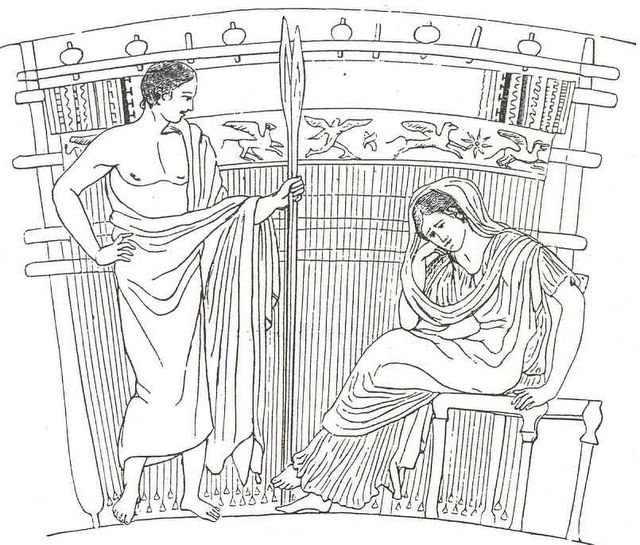First | Previous
Picture | Next Picture | Last
  |
Penelope at the loom, with Telemachus, 5th century red figure attic vase, in the Berlin Antiquarium. Penelope sits in a typical pose of grief, with her veil drawn over her head which rests in meditation on her right hand. Standing in front of her, the young man is identified by an inscription (on the original vase painting) as Telemachus. He wears an himation, which leaves his right arm and chest free. He carries two spears in his left hand. These weapons indicate that he is about to depart and he looks with sadness on his mourning mother, knowing that he has been forbidden to tell her of his journey. In the background is the loom, a large upright frame with five bars running across. Round one of these there is wound the web, from which the threads that form the woof hang to the ground, kept in place by whorls or pear-shaped weights. The piece of cloth last woven, which hangs below the roll, shows a richly-woven pattern of winged horses, a winged human figure, a cross and a star, while the side seams have an elaborate border of meanders and stripes. On the top cross-bar of the loom are a a row of pegs and what seem to be spindles - but from the simplified sketch on the original vase painting it is not possible to say how all this and the lower cross-bars worked. This is a classical loom, upright not horizontal like modern looms, but Homeric looms would surely have been no different. There is no scene such as this described in the Odyssey, but it is clearly meant to capture the mood of Book 2 when Telemachus goes off on his journey. It also, surely, reminds us of Penelope's "spinning of a yarn" to fool the suitors!
|